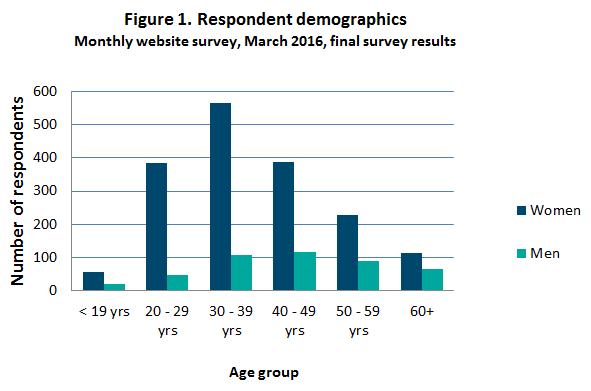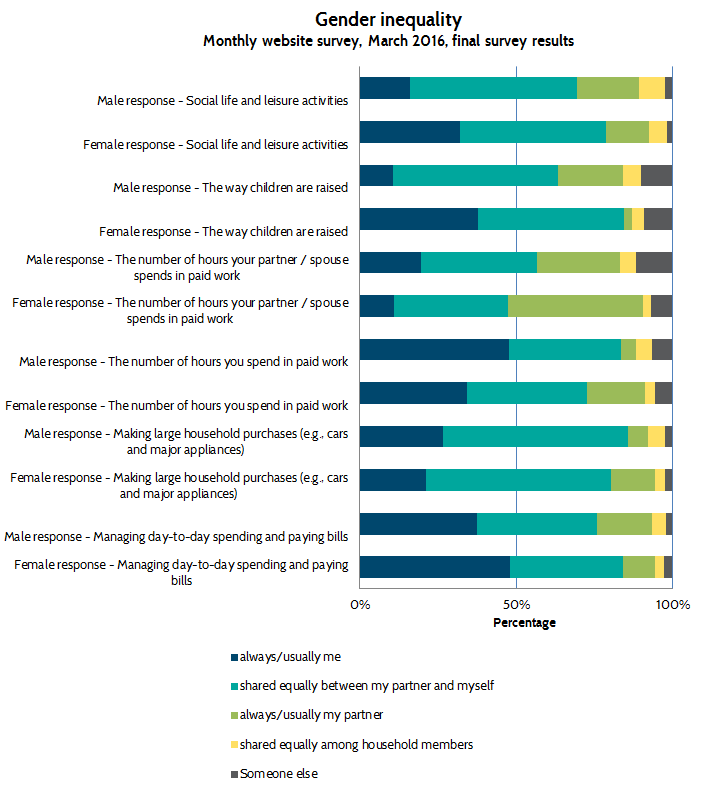Australia has made some progress towards gender equality in recent decades, particularly in areas such as education where the proportion of women attending university now outnumbers men. However, considerable disparity between the socio-economic circumstances of men and women remains evident in a number of areas. Women continue to earn less than men, are less likely to advance their careers as far as men, and are more likely to spend their final years in poverty, with higher rates of dependence on government income support and lower superannuation balances. Women are also more likely to spend a higher amount of time undertaking unpaid work. At the same time, men often find it more difficult to access family-friendly policies or flexible working arrangements than women.
Introduction
Australia has made some progress towards gender equality in recent decades, particularly in areas such as education where the proportion of women attending university now outnumbers men. However, considerable disparity between the socio-economic circumstances of men and women remains evident in a number of areas. Women continue to earn less than men, are less likely to advance their careers as far as men, and are more likely to spend their final years in poverty, with higher rates of dependence on government income support and lower superannuation balances. Women are also more likely to spend a higher amount of time undertaking unpaid work. At the same time, men often find it more difficult to access family-friendly policies or flexible working arrangements than women.
The focus of March’s online survey was to find out whether visitors to the Relationships Australia website reported differently on questions designed to test gender equality in decision making in Australian households. The gender inequality questions selected for the March 2016 online survey were adapted from the Household Income and Labour Dynamics Survey of Australia.
Previous research finds that…
- While women comprise roughly 46 per cent of all employees in Australia, they take home on average $283.20 less than men each week (full-time adult ordinary time earnings).
- The national gender “pay gap” is 18.2 per cent and it has remained stuck between 15 per cent and 18 per cent for the past two decades.
- Australian women account for 92 per cent of primary carers for children with disabilities, 70 per cent of primary carers for parents and 52 per cent of primary carers for partners.
- In 2013, Australia was ranked 24th on a global index measuring gender equality, slipping from a high point of 15th in 2006.
Results
More than 2,600 people responded to the Relationships Australia online survey in March 2016. Around four in five survey respondents (79%) identified as female, with more females than males responding in every age group (see figure 1 below). More than eighty-five per cent of survey respondents were aged between 20‑59 years, and almost 40 per cent of respondents comprised women aged between 30-49 years (inclusive).
As for previous surveys, the demographic profile of survey respondents remains consistent with our experience of the groups of people that would be accessing the Relationships Australia website.

Men and women reported significantly different levels of influence when asked about a number of household decisions relating to social activities, the raising of children, finances and spending, and the number of hours spent in paid work (figure 2).
Shared decision making was reported most commonly by both men and women when survey respondents were asked who in the family had responsibility for decisions about making large household purchases such as cars and major appliances (men – 59%, women – 59%), the way children are raised (men – 53%, women – 47%) and social life and leisure activities (men – 53%, women – 47%).
A higher proportion of female respondents when compared to male respondents reported that they usually made decisions about social life and leisure activities (men – 16% compared to women – 32%), the way children are raised (men – 11% compared to women – 38%), and managing day to day expenditure and paying bills (men – 48% compared to women – 38%).
Higher proportions of male respondents when compared to female respondents reported that they usually made decisions relating to the number of hours their partner spent in paid work (men –20% compared to women – 11%), the number of hours they personally spent in paid work (men – 48% compared to women – 34%) and making large household purchases such as cars and major household appliances (men – 27% compared to women – 21%). Although survey reports could not be compared for members of the same household, in general, reports of male and female decision making were consistent.
The highest proportion of decision making by someone else other than the survey respondent or their partner was reported for the question relating to children, with approximately 9 per cent of men and women reporting someone else made the decisions about how children were raised. Around 12 per cent of men also reported that someone else made decisions about the number of hours their partner spent in paid work.

References
Australian Human Rights Commission accessed on 14/04/2016 https://www.humanrights.gov.au/face-facts-gender-equality
Melbourne Institute of Applied Economic and Social Research, Household, Income and Labour Dynamics in Australia (HILDA) Survey accessed on 08/02/2016 https://www.melbourneinstitute.com/hilda/
